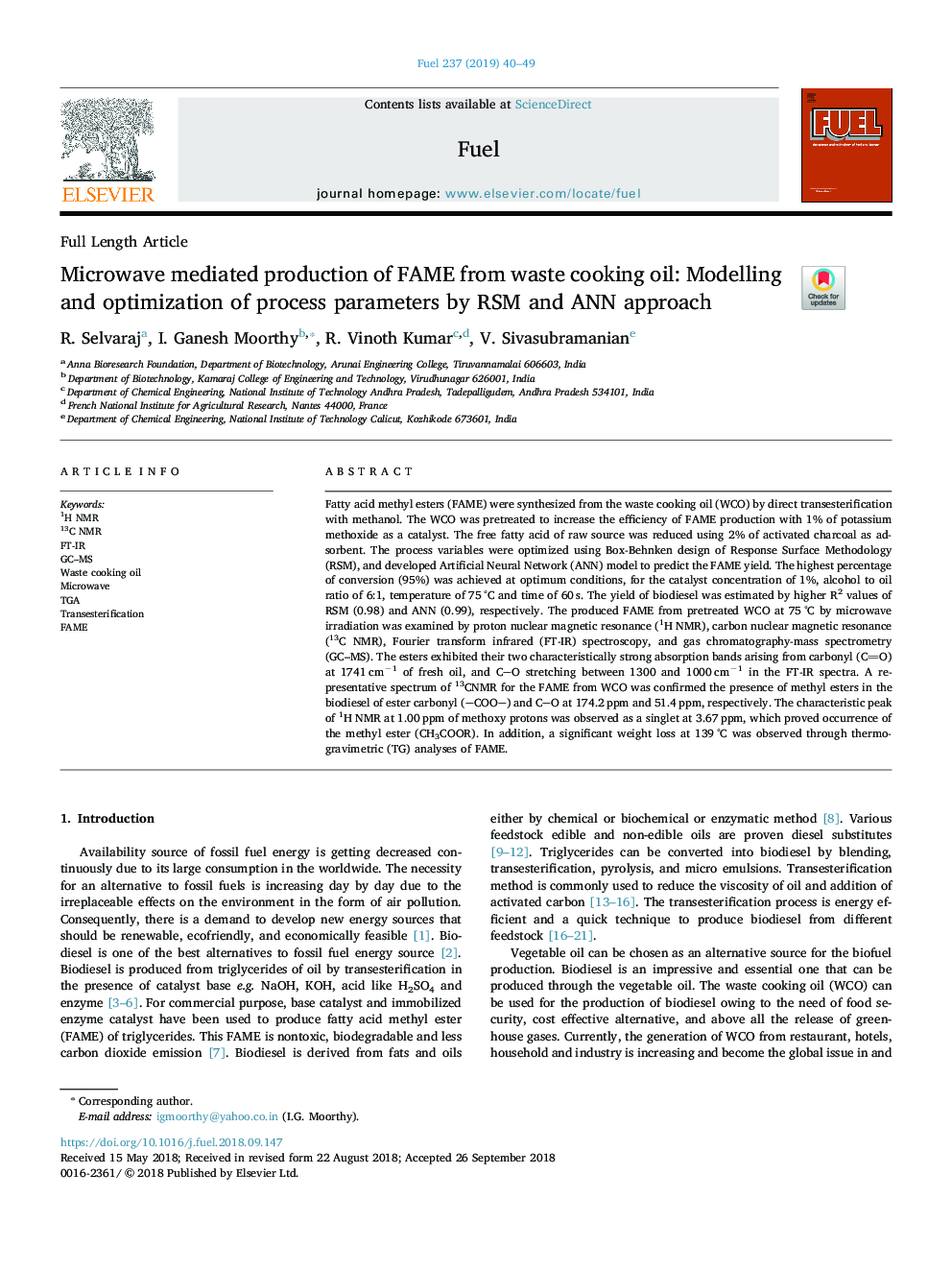| Article ID | Journal | Published Year | Pages | File Type |
|---|---|---|---|---|
| 11016634 | Fuel | 2019 | 10 Pages |
Abstract
Fatty acid methyl esters (FAME) were synthesized from the waste cooking oil (WCO) by direct transesterification with methanol. The WCO was pretreated to increase the efficiency of FAME production with 1% of potassium methoxide as a catalyst. The free fatty acid of raw source was reduced using 2% of activated charcoal as adsorbent. The process variables were optimized using Box-Behnken design of Response Surface Methodology (RSM), and developed Artificial Neural Network (ANN) model to predict the FAME yield. The highest percentage of conversion (95%) was achieved at optimum conditions, for the catalyst concentration of 1%, alcohol to oil ratio of 6:1, temperature of 75â¯Â°C and time of 60â¯s. The yield of biodiesel was estimated by higher R2 values of RSM (0.98) and ANN (0.99), respectively. The produced FAME from pretreated WCO at 75â¯Â°C by microwave irradiation was examined by proton nuclear magnetic resonance (1H NMR), carbon nuclear magnetic resonance (13C NMR), Fourier transform infrared (FT-IR) spectroscopy, and gas chromatography-mass spectrometry (GC-MS). The esters exhibited their two characteristically strong absorption bands arising from carbonyl (CO) at 1741â¯cmâ1 of fresh oil, and CO stretching between 1300 and 1000â¯cmâ1 in the FT-IR spectra. A representative spectrum of 13CNMR for the FAME from WCO was confirmed the presence of methyl esters in the biodiesel of ester carbonyl (COO) and CO at 174.2â¯ppm and 51.4â¯ppm, respectively. The characteristic peak of 1H NMR at 1.00â¯ppm of methoxy protons was observed as a singlet at 3.67â¯ppm, which proved occurrence of the methyl ester (CH3COOR). In addition, a significant weight loss at 139â¯Â°C was observed through thermogravimetric (TG) analyses of FAME.
Related Topics
Physical Sciences and Engineering
Chemical Engineering
Chemical Engineering (General)
Authors
R. Selvaraj, I. Ganesh Moorthy, R. Vinoth Kumar, V. Sivasubramanian,
